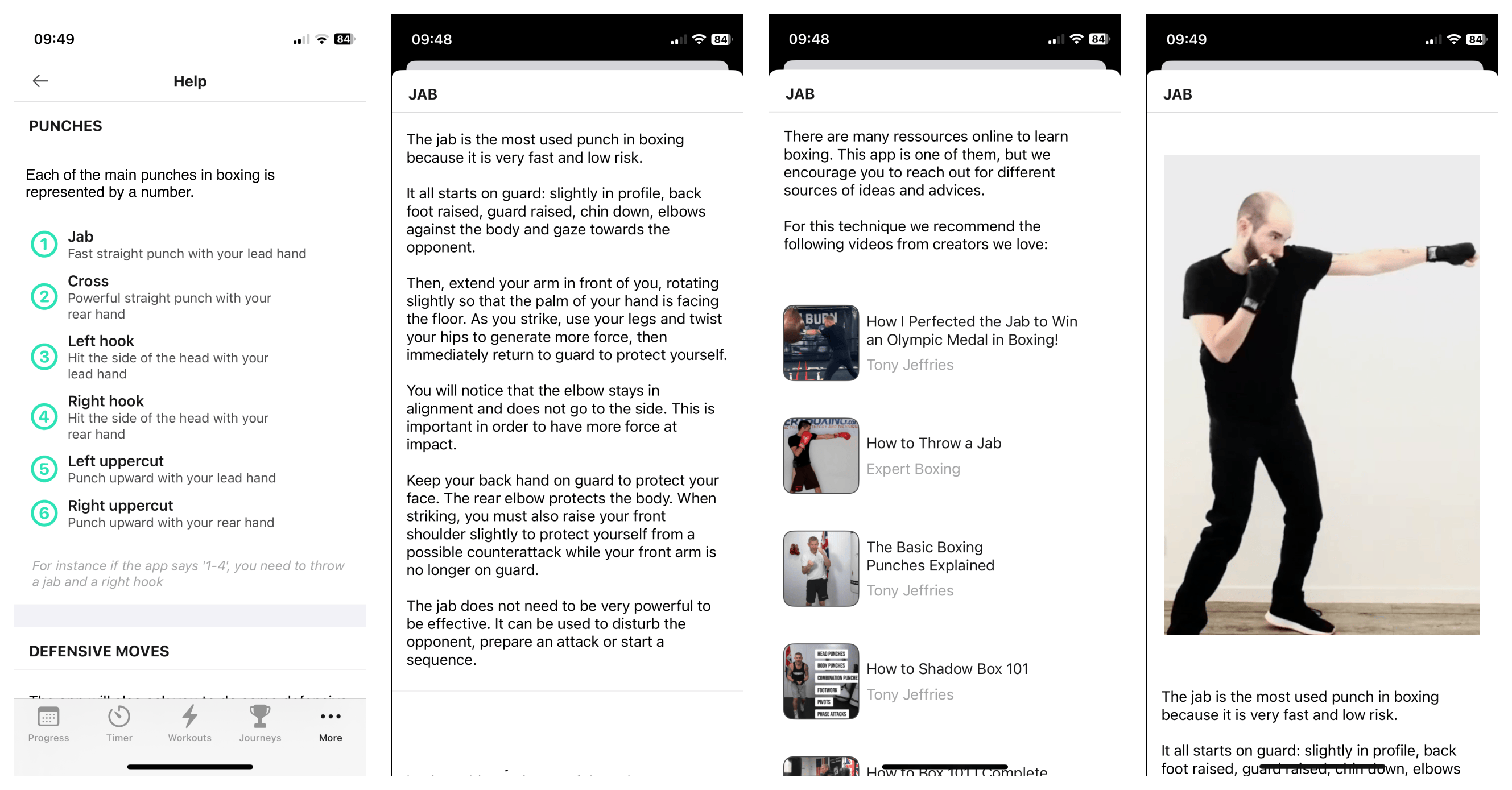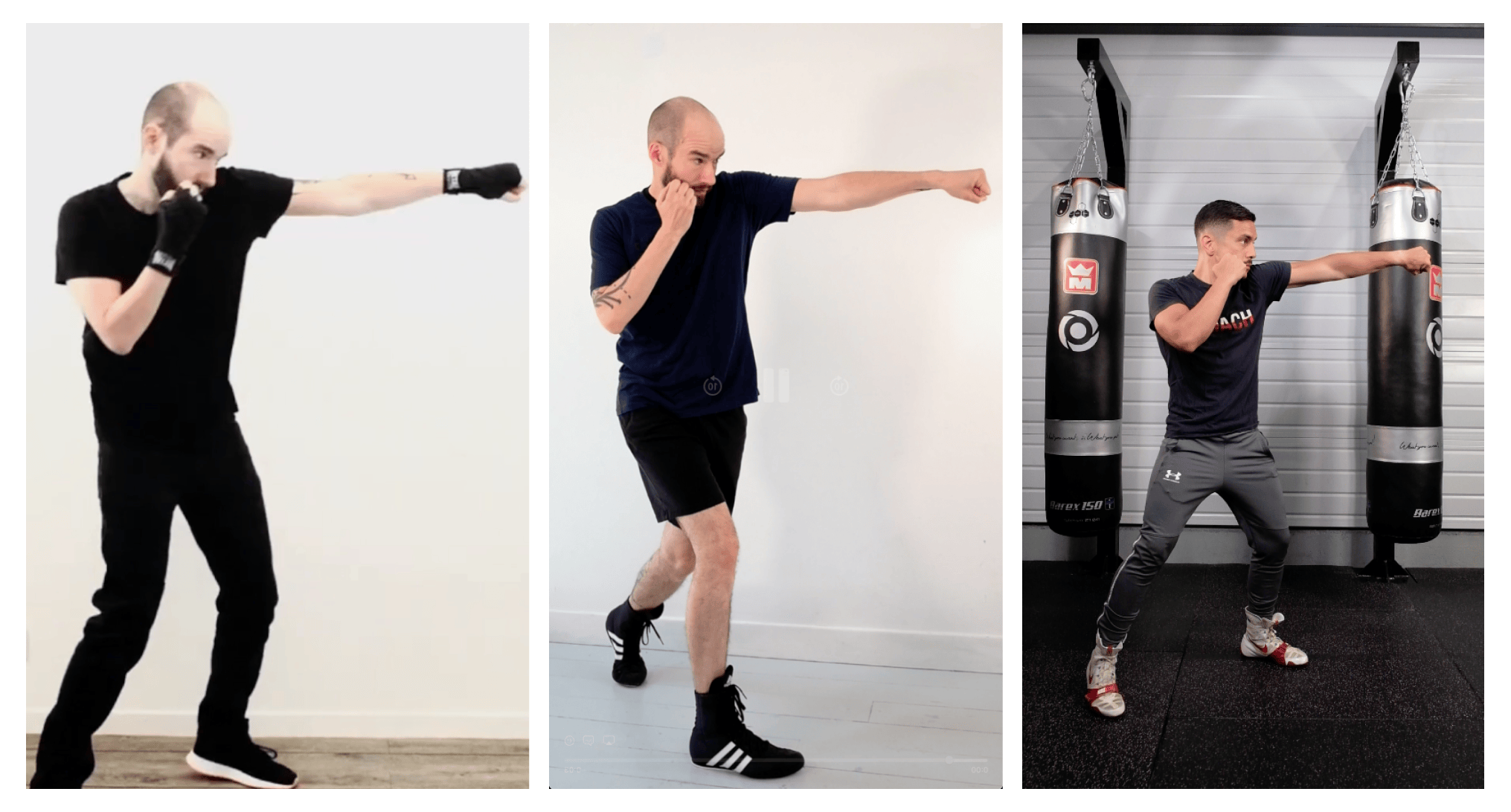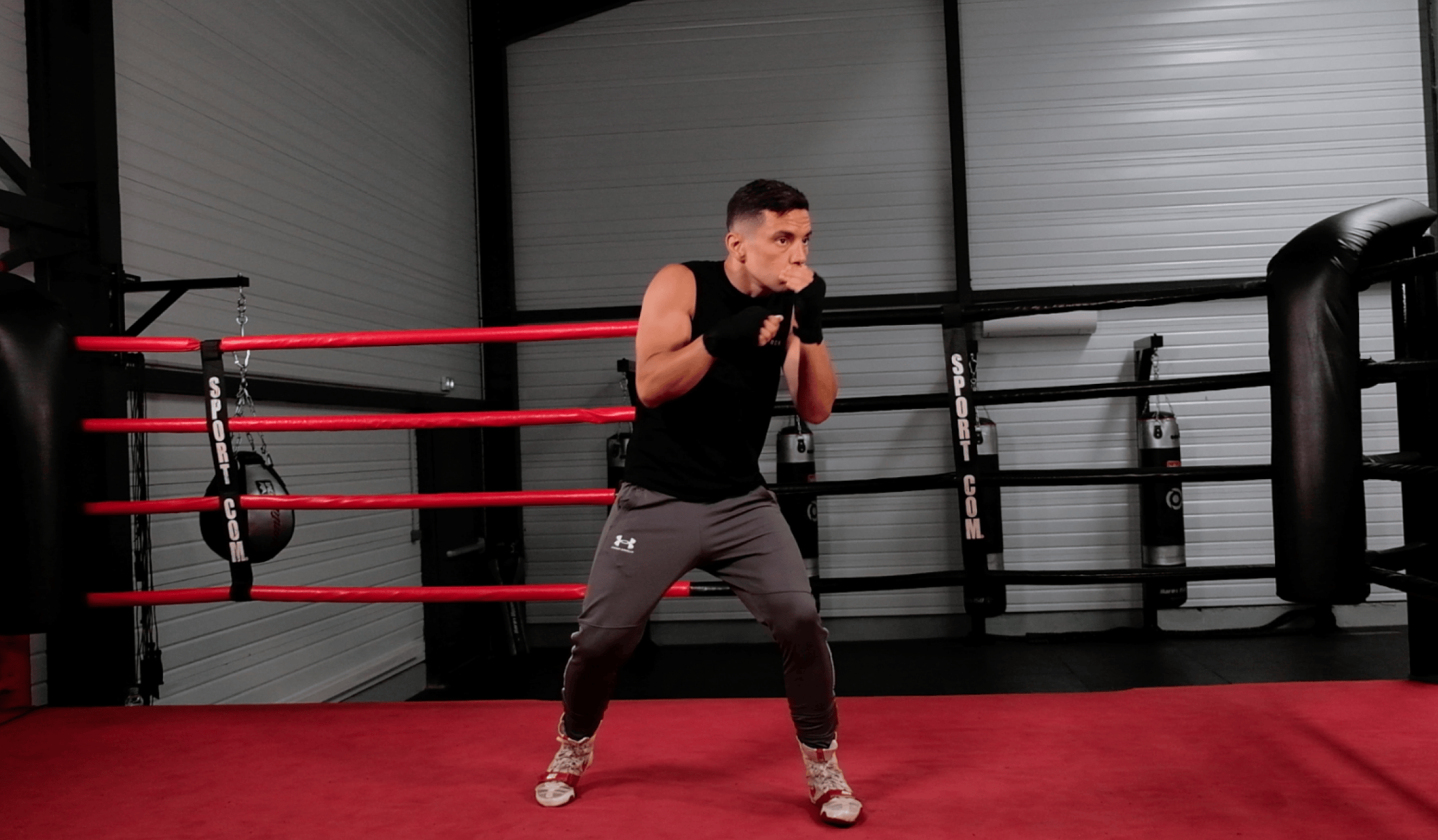I’ve already talked about Minimum Viable Products and how important it was to deliver useful software. The good news is that this idea doesn’t only apply to software and you can also have Minimum Viable Content!
As I find that you can learn a lot more by looking at the various steps someone took to get to a point than just look at where they are now, I wanted to share a personal example. While building my boxing iOS app on my own, I had to take many shortcuts with features but also with the content I provided to users to explain the different techniques of the sport. The easier it is to learn boxing with my app, the more beginners I can onboard, so it is obviously a good thing to figure out!
Trying Different Directions
Here are the iterations I went through, starting with what was the fastest option to build.

- Nothing. At the very beginning, more than 3 years ago, I would tell users to throw a “jab” or a “cross”. Either they knew what it was or they didn’t. Obviously not great, but many people downloading my app were already boxing so it was somewhat acceptable as the first step.
- A sentence. I figured it would be better to have some information about the techniques, so I provided a one liner description for each punch and defensive movement.
- More detailed text. Users could click on the technique name and see a few paragraphs explaining how to do it. It was better as someone could actually learn how to do the technique… but it’s very hard to properly convey the details of boxing in a block of text. Some users managed to clarify some details of the technique this way, but learning from scratch was a struggle.
- Text & links to Youtube videos. Writing text was quick and cheap, but I had too many feedback that users had trouble understanding the more advanced techniques. To address this, I started linking to external Youtube videos. This was very helpful, but it took people entirely out of the app, which was not great.
- Gifs of me in my kitchen filmed with a potato. I added a simple looping video above the text description of me doing the technique. The videos were pretty bad, however I still got really positive feedback and many of the complaints disappeared.
Focusing on Video Content
At that point, thanks to data and user feedback, it became clear to me that videos were the way to go.
I kind of knew it from the start, but having this validation was very important. As the only person working on this project, I really can’t afford wasting time on something that would not bring significant value to customers, so pinpointing what to build is critical.
My objective then became getting video content done. Easier said than done: what exactly did “make videos” mean and where should I start?
Here are the next steps I took to figure this out.

- Full videos of me with better equipment. I got some lights, put on boxing gear, learned to use a better camera and framed things better. On top of the gifs, I also provided longer videos with voice over to showcase the various techniques. The editing is not great and the videography can clearly be improved… but this helped me build training plans for beginners and greatly improve the onboarding.
- Recuts and reshoots. Thanks to the first videos, I quickly learned about the kind of videos that users liked. Since I was the only one involved, it was easy to reshoot some scenes and move things around. This helped me refine exactly the format and content of the videos.
- Additional videos to introduce the app. On top of the techniques videos that were getting good usage, I figured I could add a bit more for brand new users using the same setup. Beyond creating additional content, this helped me get even better at shooting and editing video.
- Higher quality video with an actual pro. Once I saw that many people were watching the videos, I figured it would be worth really investing. The good news was that I improved as a videographer while doing those various iterations, so I knew how to approach the whole thing better. I also knew the kind of videos that I needed to do, so the main thing I had to do was to up production value. To get there, I worked with an actual boxer, got a space and better equipment and spent a day shooting.

Conclusion & Next Iterations
I still have some work to do on the new videos, but I’m now pretty happy about the content and I think it is in a viable state for the next few months. There are of course many things I could improve, like the editing, writing, voice over and so on… Down the line I’d even love to have a persistent setup and shoot new videos regularly, but this is not the immediate objective nor the thing that would bring the most value to users.
I’m also glad I approached the problem in this manner. If I had to wait until good videos were made to release the app, it would have taken forever. Thanks to this whole Minimum Viable * thing, I managed to ship the app very early, get my first paying users after 3 months of work, and iterate.
Along the way users very regularly received small improvements to the experience that they could actually use right away. I was also able to react very quickly to feedback because I never was stuck in long creation cycles, meaning not only users felt listen to but I could also pinpoint more precisely what would need to get done to make people happy!

Since you scrolled this far, you might be interested in some other things I wrote:
- My Experience with Liquid Glass so Far
- Building an App to Find Highway Stops
- Sometimes Details Are Everything
- LLMO: SEO in the Age of AI?
- Asking for user feedback
- Breaking the Routine with a Quick App
- Remove That Feature
- Don't Forget to Improve your MVP
- Building, Releasing and Marketing an iOS Fitness App
- Startup & Tech Book Reviews